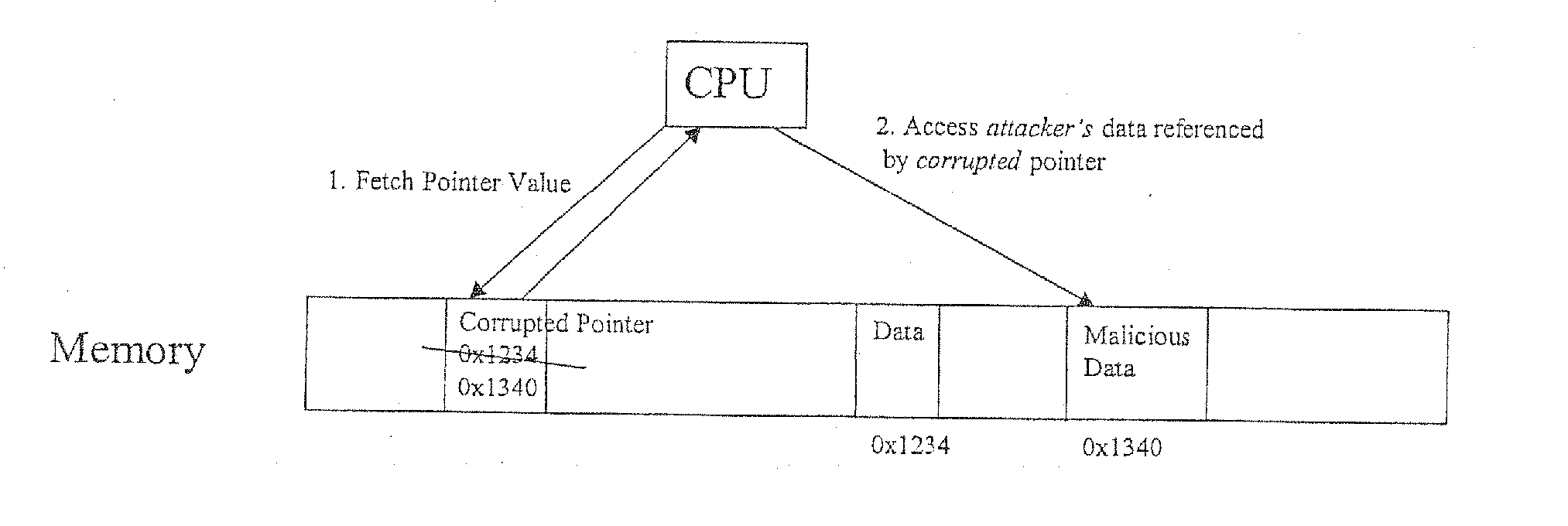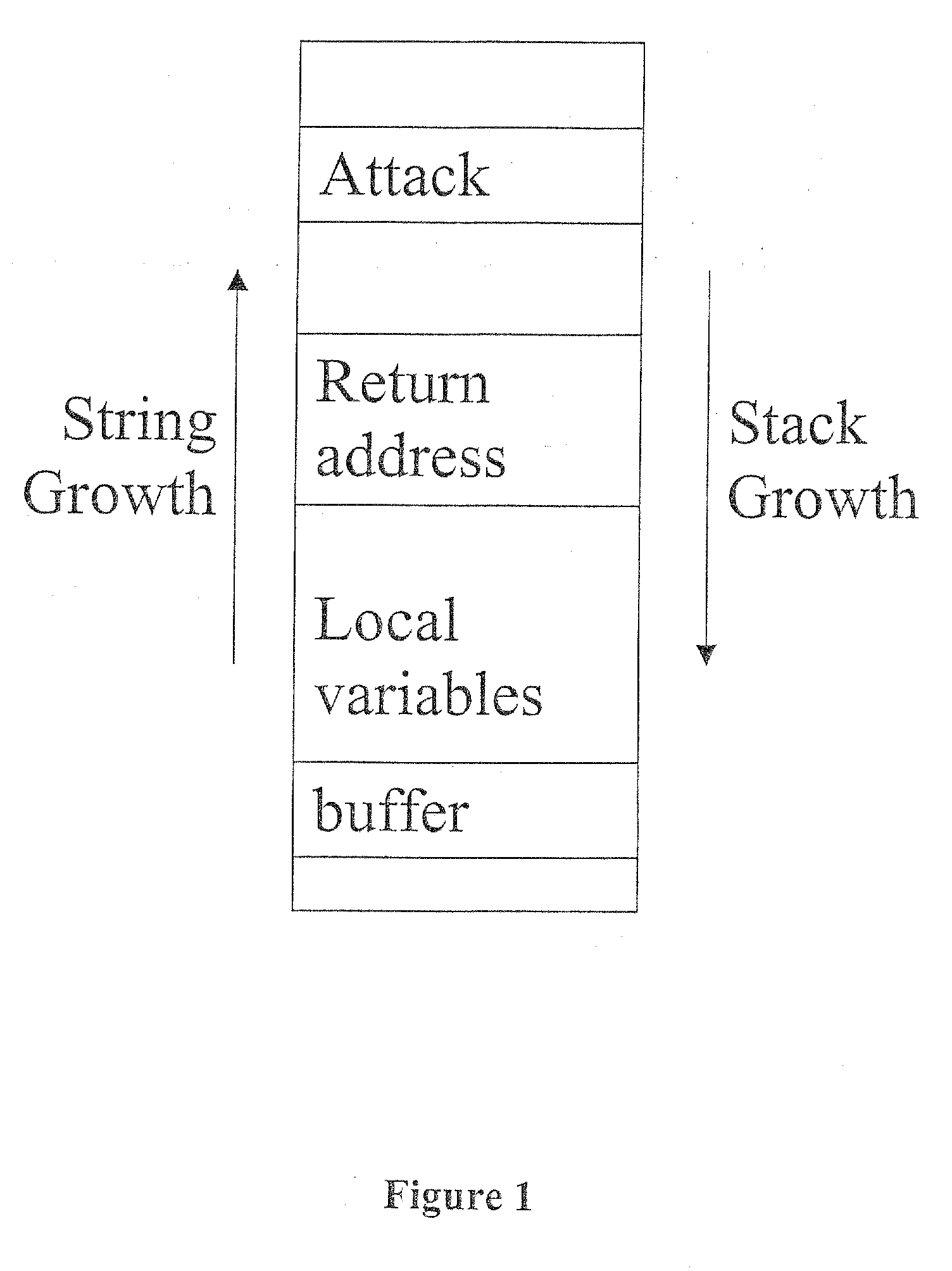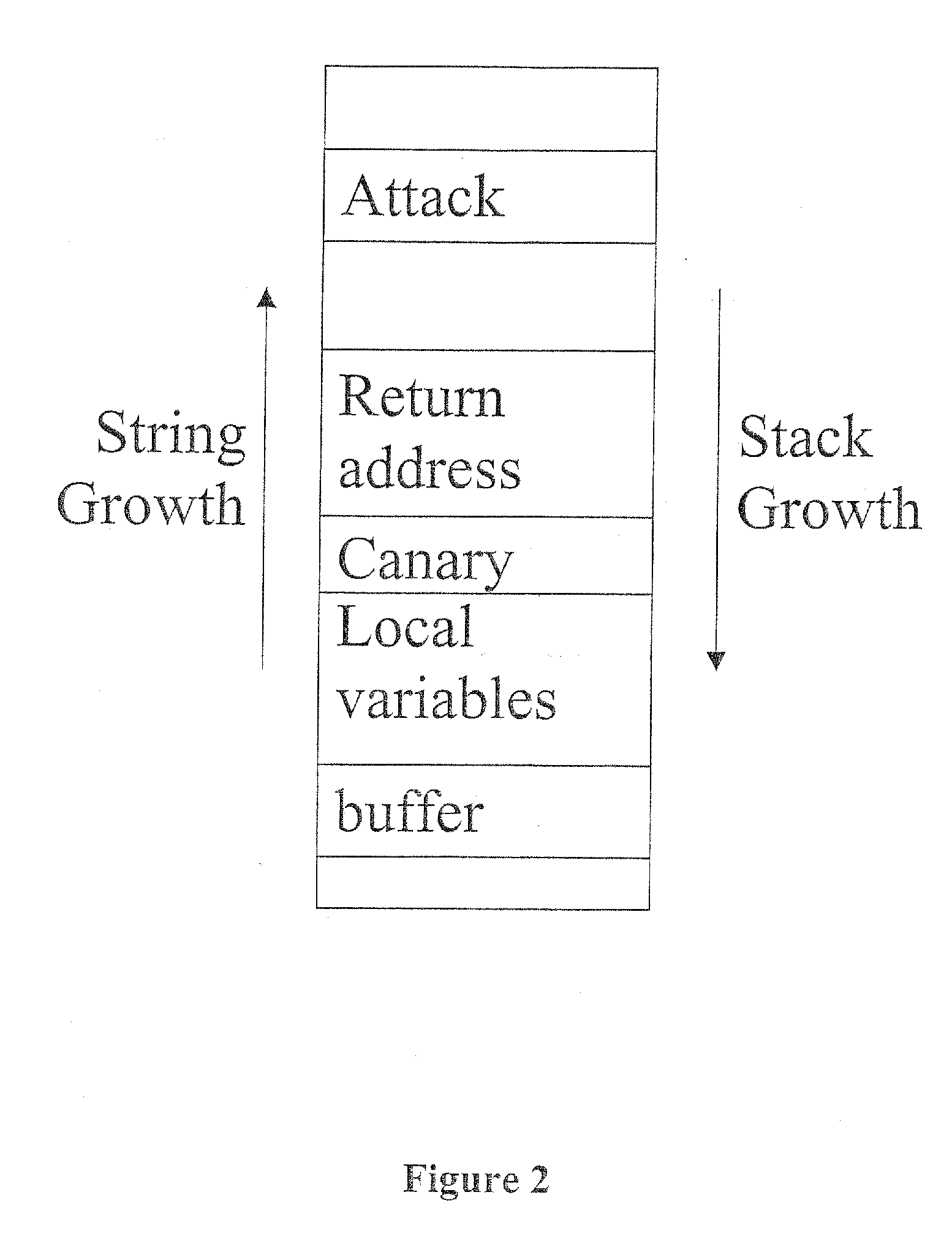Pointguard: method and system for protecting programs against pointer corruption attacks
- Summary
- Abstract
- Description
- Claims
- Application Information
AI Technical Summary
Benefits of technology
Problems solved by technology
Method used
Image
Examples
Embodiment Construction
[0103] Where to Perform Encryption and Decryption
[0104] It is vitally important that the compiler do the encryption and decryption of pointers be consistent, i.e., that pointers are consistently encrypted at such places that they are always decrypted before use, and that only encrypted pointers are decrypted.
[0105] It is important to the security value of PointGuard that pointers are encrypted when stored in memory, i.e., storage that is addressable, and thus vulnerable to attack due to un-typed memory access. CPU registers are notably not addressable, and thus the ideal method is to store pointers in the clear in registers, and encrypted in memory.
[0106] There are many possible places in the compiler to put the encryption / decryption of pointers. These options must all satisfy the “consistency” requirement, and trade off the security value against ease of implementation. FIG. 7 shows the stages of program compilation where pointer encryption can be inserted, described here:
[0107...
PUM
 Login to View More
Login to View More Abstract
Description
Claims
Application Information
 Login to View More
Login to View More - R&D
- Intellectual Property
- Life Sciences
- Materials
- Tech Scout
- Unparalleled Data Quality
- Higher Quality Content
- 60% Fewer Hallucinations
Browse by: Latest US Patents, China's latest patents, Technical Efficacy Thesaurus, Application Domain, Technology Topic, Popular Technical Reports.
© 2025 PatSnap. All rights reserved.Legal|Privacy policy|Modern Slavery Act Transparency Statement|Sitemap|About US| Contact US: help@patsnap.com



